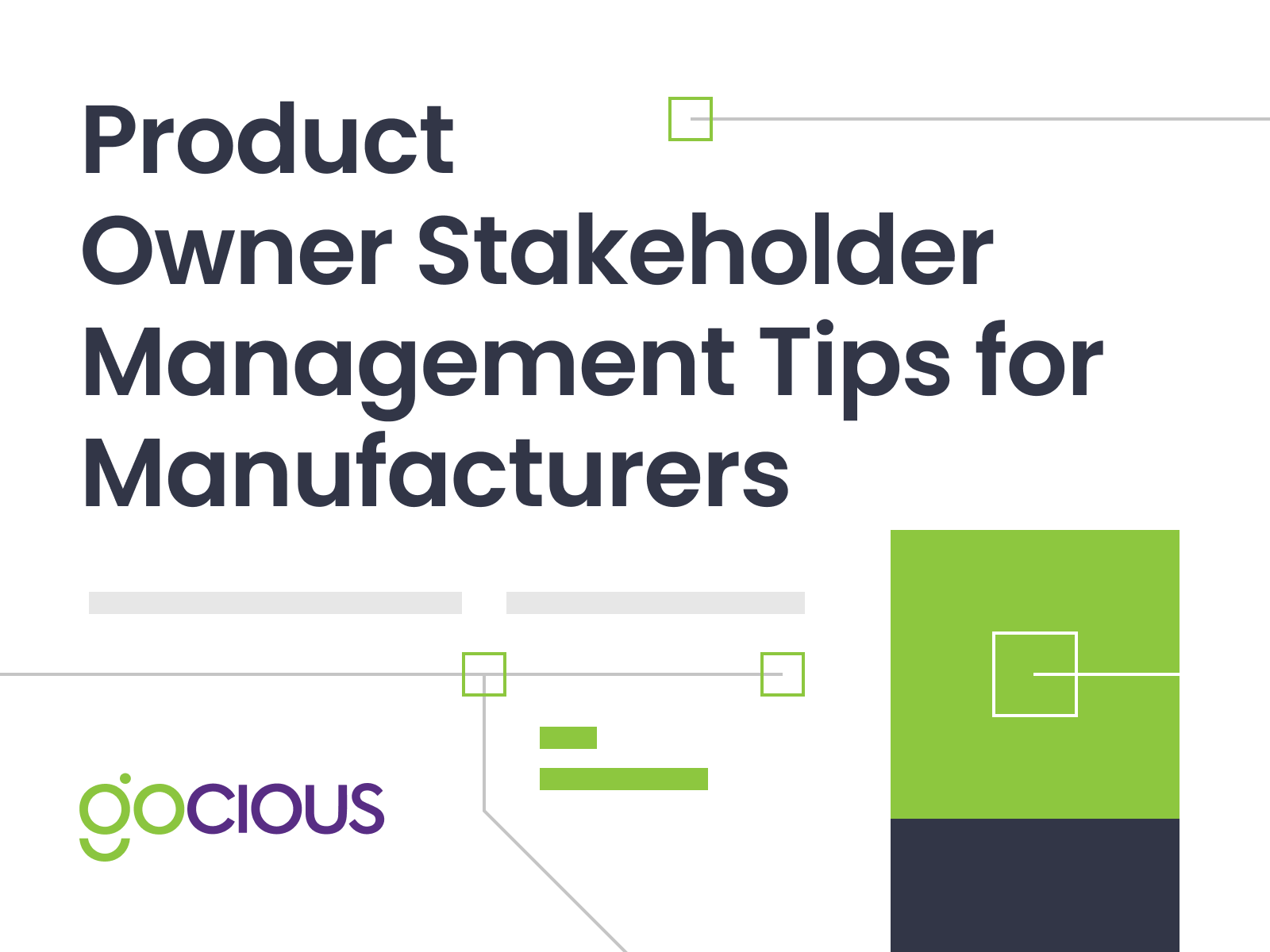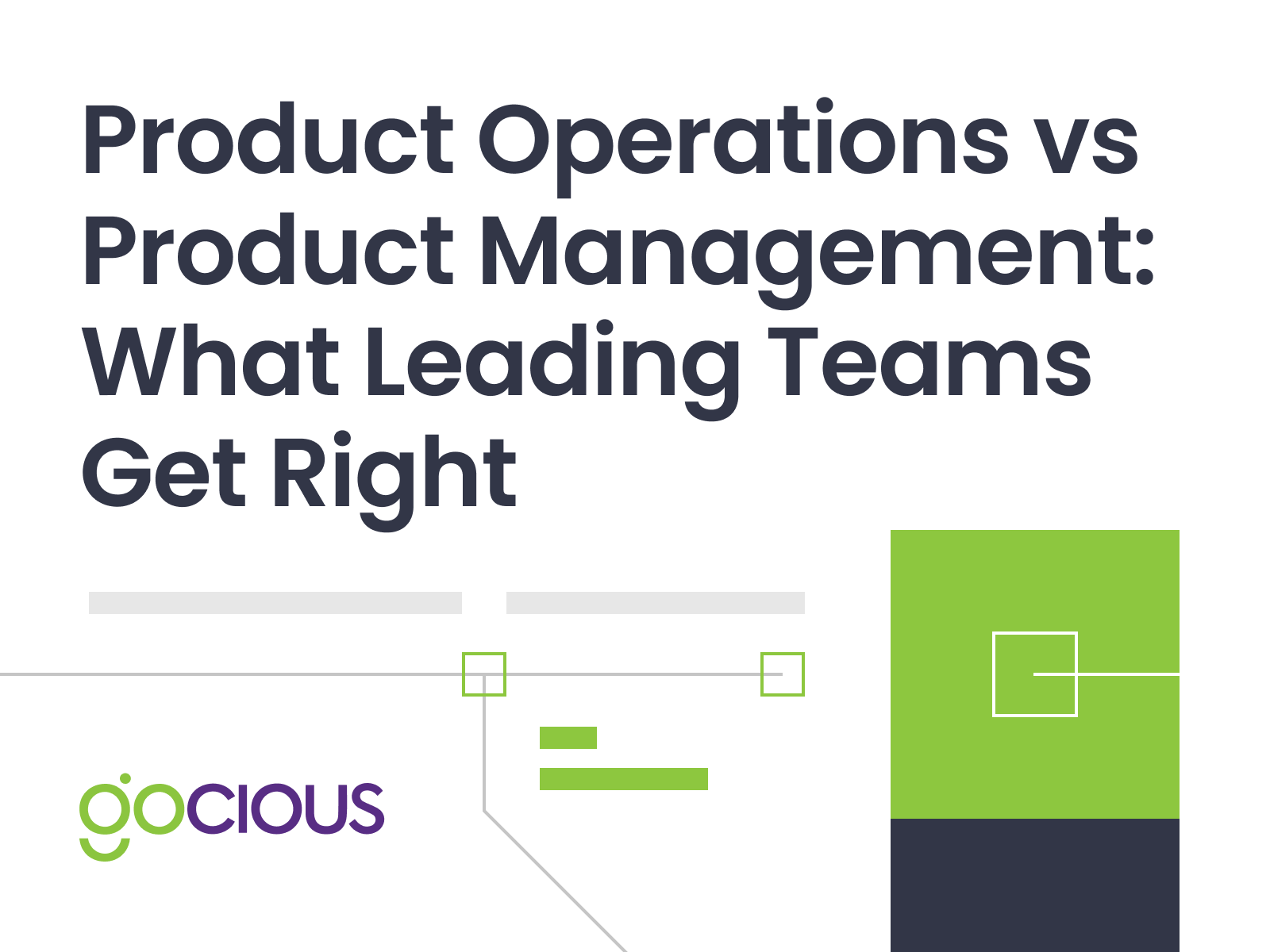
Subscribe to our blog
Ready to improve your roadmapping process?
Curious about how Gocious can help your manufacturing team transform its Product Lifecycle Management strategy? Let’s schedule a call to explore!
Product Management Articles
Why Manufacturing Data Visualization Matters for Product Leaders
Manufacturing data visualization has become essential for product leaders who oversee complex portfolios in the manufacturing industry. Many organizations still view visualization as a set of disconnected charts or standalone dashboards, which results in slow decisions, misaligned priorities, and production lines that optimize locally without improving the portfolio as a whole.
Product Owner Stakeholder Management Tips for Manufacturers
Product owner stakeholder management is becoming a make-or-break discipline for manufacturers running complex portfolios of smart, connected products. When stakeholder expectations are unclear or misaligned, capital is locked into the wrong variants, plants absorb avoidable disruption, and digital initiatives stall before they ever hit the shop floor.
Agile Product Development: Your Guide to a Successful Roadmap Process
Agile product development is the operating system that high-performing product teams use to convert product plans into on-time product launches. When product lines span complex portfolios across hardware and software, static annual plans cannot keep pace with shifts in demand volatility and regulatory change. Executives need an agile product development process that uses adaptive roadmaps to accelerate time-to-market, lower risk, and make investment trade-offs explicit at the portfolio level.
Product Operations vs Product Management: Key Role Differences
Role clarity between Product Operations vs Product Management is a structural choice that drives speed, quality, and ROI. As portfolios become cyber-physical and software-defined, blurred lines slow launches and inflate rework. Product leaders must define ownership, then execution follows suit.
Dynamic Capacity Planning 101: Turn Volatility into Strategic Advantage
Whenvolatility hits global demandor supply, factories feel the weight of production capacity limits. However, in product management, the strain shows up differently: CPOs and VPs of Product feel it when teams are misaligned and launch dates slip. They require a capacity planning view that maps human resources, roles, and time to the roadmap so they can make data-driven calls on scope, sequencing, and investment.
Chief Product Officer: Driving Strategic Vision & Product-Led Growth
Manufacturers today juggle software-defined products, multi-plant operations, and data-rich supply chains. The Chief Product Officer turns that complexity into advantage. This translates into a portfolio strategy that quantifies financial results and leads to predictable, product-led growth.
The Role of Product Operations in Manufacturing | What is Product Ops
Product operations (product ops) is the CPO’s operating backbone: the mechanism that converts digital capital (PLM, MES, IoT, AI) into predictable throughput, margin expansion, and on-time launches across programs. When product ops is weak, portfolio bets stall in handoffs. Meanwhile, when it’s strong, strategy flows to the line and measurable results flow back.
8 Benefits of Product-Led Growth for Manufacturers
Executives weighing product-led growth vs sales-led growth are asking a pragmatic question: which model improves throughput and aligns cyber-physical teams without disrupting current revenue streams?
What are Dependencies: Dependency Tracking 101 for Agile Product Managers
Supply chain, resource, technological, and production dependencies can either weave your product roadmap together or unravel it completely. For instance, a single supplier delay can negatively impact your entire product launch timeline. As a large-scale manufacturer, this can result in millions of dollars in lost market opportunities, as well as significant disruptions to product development initiatives.
What is Product Strategy: 6 Steps to Product Strategy Framework Success
When product leaders face the challenge of coordinating dozens of products across multiple markets, each with unique regulatory requirements and customer demands, the difference between success and costly misalignment often boils down to this: a well-defined product strategy.
How to Enhance Platform Thinking with Product Management Software for Modular Teams
The enhancement of platform thinking through the use of portfolio management software tools for modular teams offers manufacturing leaders a strategic framework to build stronger, better-connected ecosystems.
7 Smart Ways to Optimize Capacity Planning for Manufacturers
In 2025, the most profitable manufacturing companies aren’t those with the biggest factories. Instead, they’re the ones whose manufacturing capacity planning strategies are synced and move in real-time to shifting market and product portfolio demands. If your teams can’t adjust capacity at the same speed as your product roadmap changes, you’re already losing market share.












